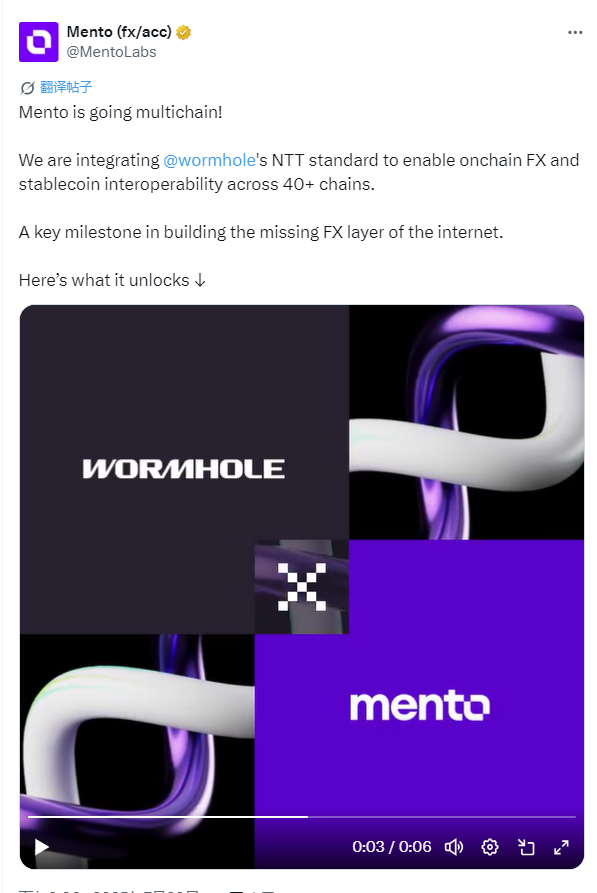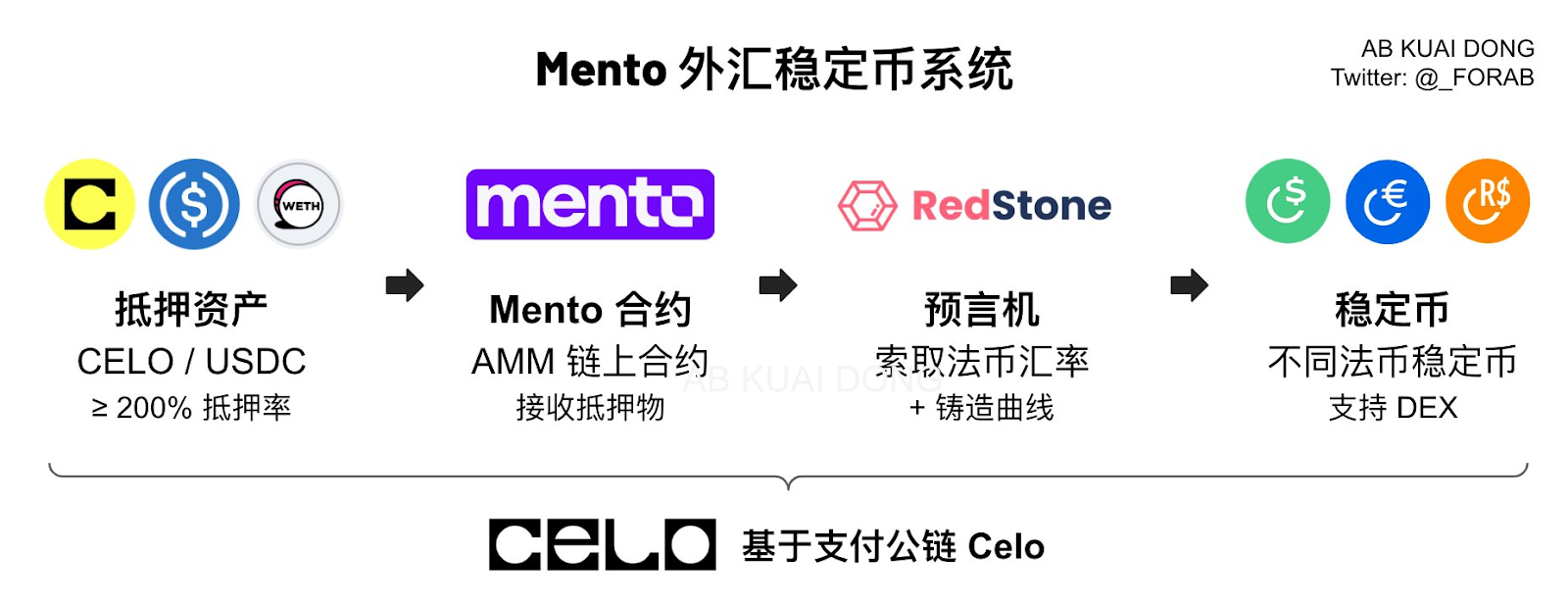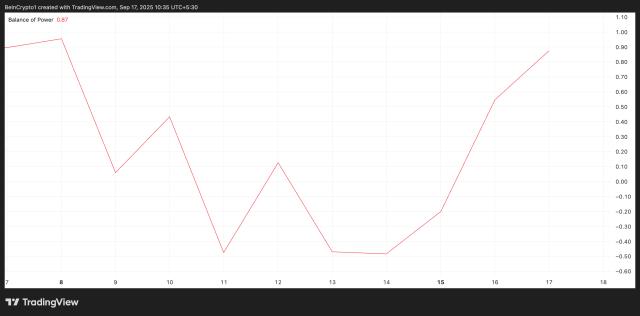
After Celo completed its stunning transformation to Ethereum L2 and integrated into the Superchain ecosystem, its largest stablecoin platformMento is quietly restructuring its positioning. This protocol, which once focused on issuing localized stablecoins for emerging markets (such as Brazilian cREAL, Kenyan cKES, Colombian cCOP, Philippine PUSO), now uses cross-chain expansion as a springboard, setting its ambitions onthe trillion-dollar on-chain foreign exchange market. Through the cross-chain protocol Wormhole, Mento plans to deploy its 15 fiat stablecoins (covering USD, EUR, JPY, South African Rand, etc.) to high-throughput public chains like Solana and Base, and build a DEX and liquidity pools supporting multi-currency trading, aiming to become the on-chain infrastructure connecting global monetary systems.
The Underlying Architecture of On-Chain Forex Network: Mento's Technical Route and Multi-Chain Ambitions

Mento's core strategy is to use Wormhole as its vascular network, delivering 15 fiat stablecoins (including USD, EUR, JPY) that support minting and redemption on its platform to emerging public chains like Solana and Base with high throughput and low transaction costs. This deployment is far from simple asset replication, but rather building a foundational layer of cross-chain, cross-currency liquidity. Technically, Mento is built on a stablecoin protocol supported by its custom automated market maker (AMM) curve. Its unique feature is that users can mint any of its supported fiat-pegged stablecoins through an over-collateralized basket of assets including CELO (and historically cUSD, cEUR) or other on-chain assets like ETH and BTC.
Critically, its 200% over-collateralization mechanism is key. This collateralization rate, far higher than the industry standard (such as MakerDAO's stability fee and liquidation line design), is the core reason for Mento's current liquidity depth differences. While the high collateral requirements significantly enhance the safety margin of single fiat token prices during volatility or black swan events, ensuring strict 1:1 fiat pegging, they also greatly increase the cost for arbitrageurs to mint new assets and balance cross-pool exchange rates. The compressed arbitrage space directly leads to insufficient trading pool depth for currencies other than USD and EUR (which typically have larger, more active pools), creating a current landscape where "USD and EUR are deep as the sea, while other currencies are shallow and narrow", largely limiting the feasibility of small-scale, high-frequency transactions and failing to match real commercial settlement needs.
The Prisoner's Dilemma of Security and Liquidity: The Double-Edged Sword of 200% Collateralization
Deeply dissecting the core contradiction of the Mento mechanism - the 200% collateralization setting - is the key to understanding its current state and future potential. This solid "safety shield" is forged through multiple considerations: First, it addresses the highly complex exchange rate fluctuation risks behind the diverse fiat currency basket. Unlike single USD stablecoins that only need to track the USD index, the Mento system must dynamically defend against massive relative price fluctuations between over ten currencies. High collateral acts like a thick buffer. Secondly, the volatility of the collateral itself cannot be ignored. When users use native crypto assets like Ethereum, Bitcoin, or CELO as collateral, the inherent high volatility of these assets constitutes a systemic risk source, and the 200% requirement aims to reserve sufficient space for collateral value drops, avoiding frequent liquidation storms that could impact system stability.
However, security comes at a cost. High collateralization essentially locks up substantial capital, and in the DeFi realm where capital utilization efficiency is lifeline, this means enormous opportunity costs. When participants choose to mint non-mainstream fiat stablecoins (like minting a Singapore dollar stablecoin for a small trade settlement), they need to invest qualified assets worth twice or more the minting value. This not only greatly suppresses ordinary users' willingness to participate but also severely tests professional arbitrage institutions' profit models. When potential forex arbitrage profits fail to cover high collateral costs and potential risks (such as collateral drops triggering liquidation), funds naturally won't flood into non-mainstream trading pairs, directly explaining why currencies like JPY, New Taiwan Dollar, and Hong Kong Dollar are already online but still mainly adapted for small transactions.
Geographic Barriers and Hard Demand Misalignment: Asian Markets Thirst for On-Chain "Infrastructure"
Mento's publicly disclosed fiat currency on/off-ramp channels clearly outline its real-world geographic service boundaries: centered on the USD and EUR zones. This is indeed highly related to regulatory maturity, advanced traditional financial payment infrastructure, and early stablecoin user distribution, but the result is a significant misalignment between its current service capabilities and the most potential market - Asia.
Asia, especially East and Southeast Asia, with economic pulses tightly embedded in global manufacturing, commodity trade, and technology industry chains, naturally contains high-frequency, large-volume, diverse forex conversion needs. The international financial center status of Hong Kong and Singapore, the technology-intensive export-oriented economies of Japan and Korea, and the complex cross-border commercial settlement within the Association of Southeast Asian Nations all call for lower-cost, more efficient and transparent, 24/7 cross-currency trading platforms. The pain points of traditional forex remittance processes - cumbersome, high-fee, and low-efficiency (often T+1 or longer) - are precisely what protocols like Mento aim to eliminate. However, the current lack of efficient, compliant, and deeply-covering on/off-ramp channels for major Asian currencies (except JPY), along with the aforementioned insufficient depth of non-mainstream trading pairs, severely constrains its application in scenarios like cross-border payments for massive small and medium Asian enterprises, cross-border salary distribution for gig economies, fund management for frequent international travelers, and growing operational expenses for blockchain-native projects operating across multiple countries. Mento's grand vision urgently needs to find a critical strategic fulcrum in the Asian region.
Industry Transformation Signal in the Wave of On-Chain Asset Explosion: Mento is Not Alone
Mento's strategic upgrade is not an isolated phenomenon, but a key chapter embedded in the grand 2025 narrative of "Real World Asset (RWA) on-chain". The current market is witnessing an epic migration: from the historically significant Bitcoin spot ETF approval attracting funds, to mainstream investment institutions continuously adding US Treasury token products (with BlackRock's BUIDL fund already exceeding $500 million), to various countries actively exploring cross-chain interoperability blueprints for sovereign digital currencies (CBDC). Traditional financial giants (like Goldman Sachs) are actively deploying tokenized private equity fund trading platforms, and even the NYSE chairman has publicly endorsed the prospect of on-chain trading settlement. Financial foundational assets - stocks, sovereign credit-backed debt instruments (government bonds), and the monetary exchange that builds the global economic capillaries - are accelerating their migration to the chain.
Against this grand backdrop, public chains like Celo and Stellar Lumens (XLM) from the previous generation, which raised the banner of "payment inclusivity" and their top applications (such as Mento), are facing severe challenges in transforming their growth momentum. Simple low-cost cross-border dollar payments have long been squeezed out of market space by emerging Rollup networks and optimized stablecoin channels (such as USDC and PYUSD). Transformation is not a choice, but a matter of survival. Mento focuses on multi-currency exchange, essentially upgrading its protocol capabilities from a pure "dollar settlement tool" to a "bottom-layer on-chain foreign exchange infrastructure" supporting complex multilateral economic activities.
This transformation direction is forming an industry consensus. We see Ripple continuously deepening its On-Demand Liquidity (ODL) solution, seeking to connect more currency corridors (especially in Southeast Asian countries); Circle, while centered on USDC, also implies exploration of more convenient multi-currency conversion paths through its CCTP cross-chain transmission protocol and cooperation network; even MakerDAO is gradually absorbing more real-world asset collaterals (such as US Treasury bonds), and its massive Dai stablecoin reserve could theoretically support broader on-chain multi-currency application scenarios in the future. Mento is not the only player seeing this opportunity, and its "on-chain forex Lego" practice provides the entire industry with a radical but highly referential transformation sample.
Challenges Ahead, Opportunity Window Opening
While Mento's blueprint for building a global on-chain foreign exchange market is exciting, the obstacles it faces cannot be ignored. The 200% collateralization constraint requires designing more sophisticated risk hedging mechanisms (such as introducing on-chain forex derivatives to hedge exchange rate fluctuation risks) or exploring partially legal and compliant off-chain custodial assets as supplementary collateral sources, to gradually reduce capital efficiency constraints while ensuring safety. The regulatory net is tightening from all directions, with multiple countries facing huge uncertainties regarding stablecoins (especially non-USD stablecoins) and DeFi protocols like Mento that connect multi-currency exchanges - their compliance status, AML/CFT obligations, capital requirements, and how they interface with existing foreign exchange management frameworks. Especially in different Asian jurisdictions, regulatory scales vary dramatically, making it crucial to seek limited pilot permits in key regions.
More importantly, there is a user experience chasm. Seamlessly integrating on-chain multi-currency exchange into real business or personal payment settlement flows requires solving complex issues like tax reporting (do currency conversions trigger capital gains tax?), easy merchant local currency reception (how can merchants receive and settle in their local currency with one click?), and extremely user-friendly entry/exit points for non-crypto professional users (such as compliant access to local bank cards and popular electronic wallets). The protocol's ultimate success will ultimately depend on whether it can become an irreplaceable "infrastructure" in real economic activity settlement chains. In fierce competition, liquidity depth is the moat, and user experience stickiness is the lifeline. Currently, insufficient depth of non-mainstream currencies has become Mento's biggest shortcoming. How to attract real users (including market makers) with genuine transaction needs, willing to settle funds and trading habits on its platform, will be the fortress it must conquer to move from "technically feasible" to "commercially viable".







